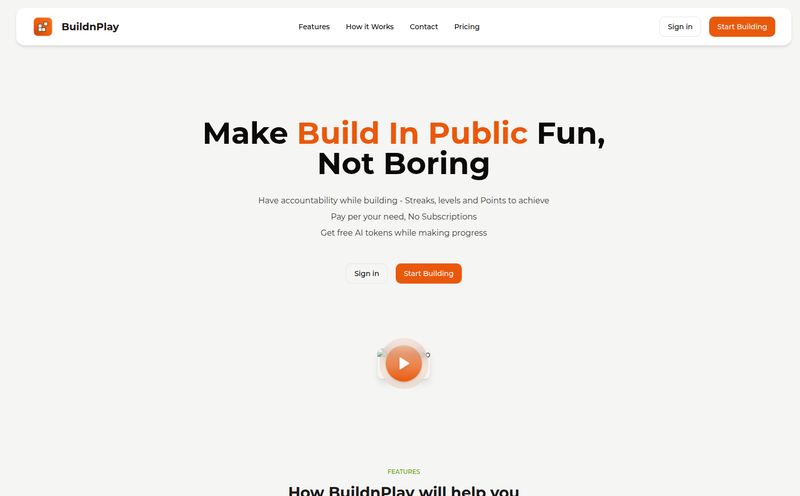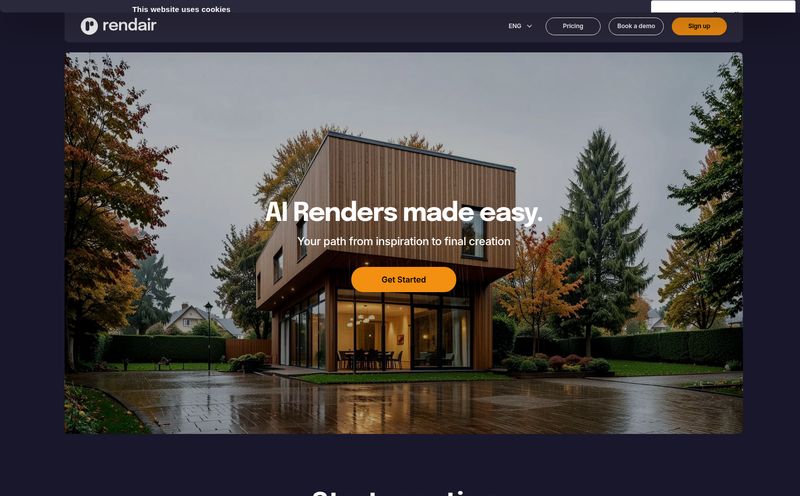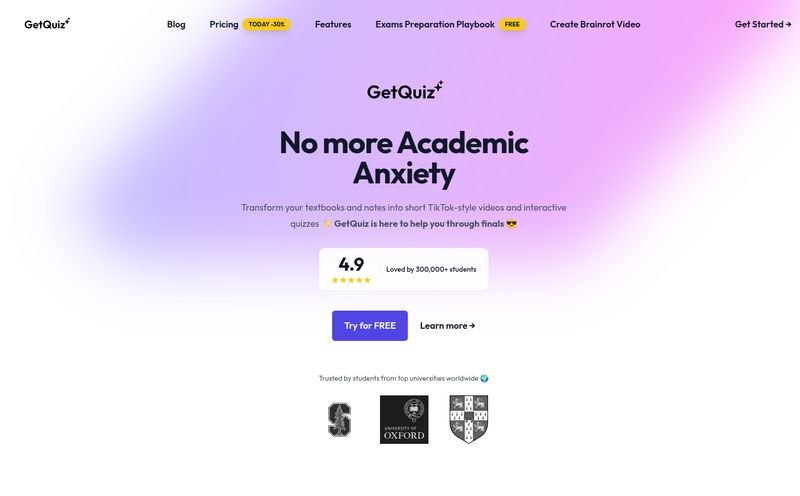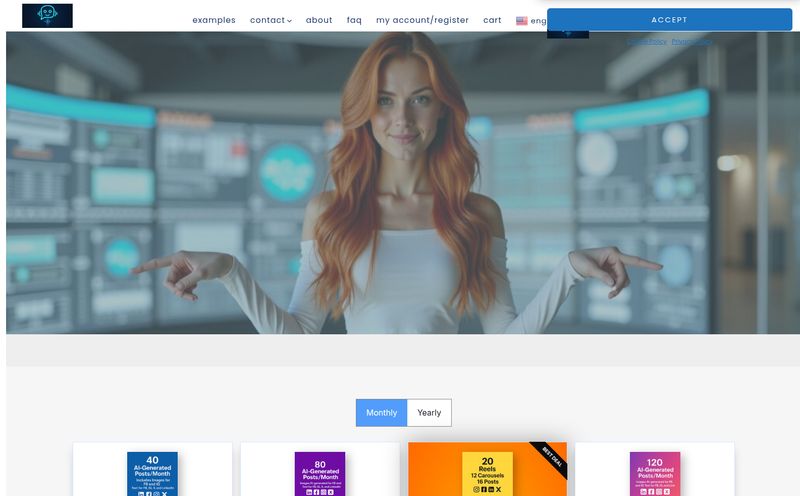We’ve all been there. It’s 11 PM, you’re staring at a blank screen, and the content beast needs feeding. The pressure to pump out daily videos for YouTube Shorts or TikTok is immense. You know video is king for traffic and engagement, but the sheer grind of scripting, finding visuals, editing, and posting… it’s a full-time job. And then some.
For years, the dream has been passive income from a YouTube channel. But who has the time? Or maybe you’re like a lot of folks I know – full of great ideas but terrified of being on camera. This is where the whole “faceless YouTube channel” trend exploded. Think of those satisfying history channels, spooky story narrations, or psychology fact accounts. No on-camera personality, just compelling content. It's a genius model, but it still requires a ton of work behind the scenes.
So, when a tool like Renderfire lands on my desk promising to put all of that on autopilot, my inner SEO-nerd and overworked creator gets… intrigued. Skeptical, but intrigued. Can an AI really create and post engaging videos every single day? I had to find out.
What Exactly is Renderfire? (And Who Is It For?)
Okay, let's strip away the marketing jargon. Renderfire is a generative AI tool that creates short, faceless videos for you. You give it a topic – let’s say “Ancient Roman Daily Life” or “Fun Facts About Sloths” – and its AI gets to work. It writes a script, finds relevant (and pretty stunning) AI-generated images, adds a voiceover, slaps on some music and subtitles, and then posts it directly to your YouTube or TikTok channel. On a schedule. Without you touching it.
It’s like having a ghostwriter, a graphic designer, a video editor, and a social media manager all rolled into one little AI-powered package. It's designed for a few specific types of people:
- The aspiring creator who wants to start a channel but is camera-shy.
- The marketer who wants to test out different content niches without investing massive resources.
- The side-hustler who wants to build a content machine that runs in the background.
- Honestly, anyone who values their time more than the tedious parts of video production.
The 3-Step "Magic" Behind Renderfire
The Renderfire homepage touts a simple three-step process. I’m always wary of things that sound too simple, but the workflow is genuinely straightforward.
Step 1: Pick Your Poison (I Mean, Topic)
First, you tell the AI what you want your video “series” to be about. This is the core theme of your channel. You can choose from pre-set topics or type in your own. You also select the language and a narrator voice. I saw a few different voice options, which is a nice touch to avoid sounding exactly like every other AI channel out there.
Step 2: The AI Does Its Thing (Then You Tweak It)
Once you’ve given it the topic, the AI generates the first video. This is the part that feels like sorcery. But it's not a black box. Renderfire then presents you with a preview and an editor. You can go in and review the video, swap out images you don’t like, edit the subtitles, change the music, and make sure the whole thing actually makes sense. This human oversight is absolutly critical, because let's face it, AI can get weird sometimes.
Step 3: Set It and Forget It? Automated Posting
After you’re happy with the template, you connect your YouTube or TikTok account, set a posting schedule, and… that’s it. Renderfire will continue to generate new, unique videos based on your series topic and post them automatically. Three times a week? Once a day? Twice a day? You choose. This is the “autopilot” promise, and it’s the biggest selling point.
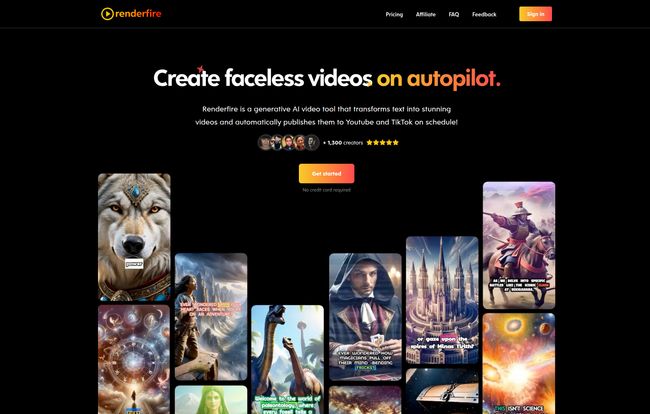
Visit Renderfire
A Look Under the Hood at its Features
The core feature is obviously the automated video creation, but there’s a bit more to it. The concept of a “Series” is smart. Instead of just churning out random one-offs, it helps you build a thematically consistent channel, which is something the YouTube algorithm definitely appreciates. The AI handles the content generation from scratch, turning a simple text prompt into a full video with visuals, sound, and captions. It’s a true text-to-video platform built for social media automation.
The Million-Dollar Question: What's the Price?
Alright, so how much does this AI assistant cost? Renderfire has a tiered subscription model, which is pretty standard for SaaS tools. I’ve broken it down into a simple table because nobody likes hunting for pricing details.
| Plan | Price | Key Features | My Take |
|---|---|---|---|
| Hobby | $19 / month | 12 videos/month (3 per week), 1 series, 1080p resolution, no watermark. | Perfect for testing the waters. A low-risk way to see if the faceless content model works for your niche. |
| Pro | $39 / month | 30 videos/month (1 per day), 1 series, all Hobby features. | This is for when you're getting serious. A daily video is a solid content cadence for platforms like TikTok or YouTube Shorts. |
| Premium | $69 / month | 60 videos/month (2 per day), 1 series, all Pro features. | You're running a content factory at this point. Ideal for someone managing multiple channels or going all-in on a high-growth strategy. |
Each plan comes with "credits," which I assume are used for the AI image generation or other premium actions within the editor. The pricing feels fair, especially when you compare it to the cost of hiring a single freelance video editor for even one or two videos.
My Honest Take: The Good, The Bad, and The AI-Generated
I’ve been in the SEO and traffic generation game for a long time, and I've seen hundreds of tools that promise the world. Here’s my unfiltered opinion on Renderfire.
What I Genuinely Liked
The speed is just undeniable. To go from a simple idea to a finished, decent-looking video in minutes is something that would have sounded like science fiction a few years ago. It massively lowers the barrier to entry. You don’t need fancy software or editing skills. You just need an idea.
The set-and-forget scheduling is a godsend. Consistency is the most important factor for growth on social platforms, and Renderfire makes that consistency almost effortless. I've always felt that the best tools are the ones that save you time, and this platform does that in spades.
Where It Gets a Bit... Robotic
Let's not kid ourselves, an AI is not a human creative. While the videos are good, they can sometimes lack a certain spark or nuance. You might get an image that's technically correct but emotionally tone-deaf. That's why the editing step is so important. You can't just blindly trust the AI to create a masterpiece every time.
It's also limited to faceless videos. That's its whole thing, so it's not really a flaw, but a limitation to be aware of. If you're trying to build a personal brand, this isn't the tool for you. This is for building content-centric, topic-based brands.
Some might argue that relying on AI dilutes the quality of content online. And you know what? They have a point. But in my experience, a well-guided tool can produce better content than an unmotivated human. The key is guidance. You're the director, the AI is your crew.
Is Renderfire Worth Your Hard-Earned Cash?
So, the final verdict. Is it worth it? I think it comes down to what you value. If you view Renderfire as a magic button that will make you rich and famous overnight, you're going to be disappointed. That's not how this works.
But if you view it as an incredibly powerful assistant that automates the most time-consuming 80% of video creation, then yes, it's absolutely worth it. It’s a tool, not a replacement for strategy. You still need to pick good niches, check the AI's work, and engage with your audience. What it does is free you up from the production treadmill so you can focus on the high-level strategy that actually grows your channel.
For less than the price of a few fancy coffees a month, you can have a system that pumps out content while you sleep. For content creators and marketers, that’s not just a good deal; it's a strategic advantage.
Frequently Asked Questions about Renderfire
- What's a video 'series' in Renderfire?
- A series is just the theme for your channel. For example, you could create a 'Scary Stories' series, and Renderfire would continuously generate new spooky tales for you. Your subscription plan determines how many series you can run at once (most plans start with one).
- Can I actually edit the videos the AI makes?
- Yes, and you should! After the AI generates a video, you get access to an editor where you can change images, tweak the script and subtitles, adjust music, and more. This gives you final creative control.
- Do I own the content I create with Renderfire?
- According to their FAQ, yes. You own the videos you create, which is a critical point. You can download them and use them as you wish.
- What platforms can I post to automatically?
- Currently, Renderfire supports automated posting directly to YouTube and TikTok, which are the two biggest platforms for the short-form, vertical video format it specializes in.
- Can I cancel my subscription easily?
- They state you can cancel anytime with a click from the dashboard's billing page. No need to call someone or jump through hoops, which is always a good sign.
- Is the AI-generated content truly unique?
- The platform claims to generate fresh, new videos for you each time. While the AI is drawing from a massive dataset, the combination of script, images, and voiceover for your specific topic should result in a unique video. However, there's always a chance of thematic overlap with other users exploring similar topics.
Conclusion
Tools like Renderfire represent a major shift in the creator economy. The focus is moving from manual production to creative direction. It's not about making a single, perfect video anymore; it's about building a scalable system for consistent content delivery. Renderfire provides that system in a surprisingly slick and affordable package. It won't replace human creativity, but it can certainly amplify it. If you've been sitting on an idea for a faceless channel, this might just be the kickstart you need to finally bring it to life.
